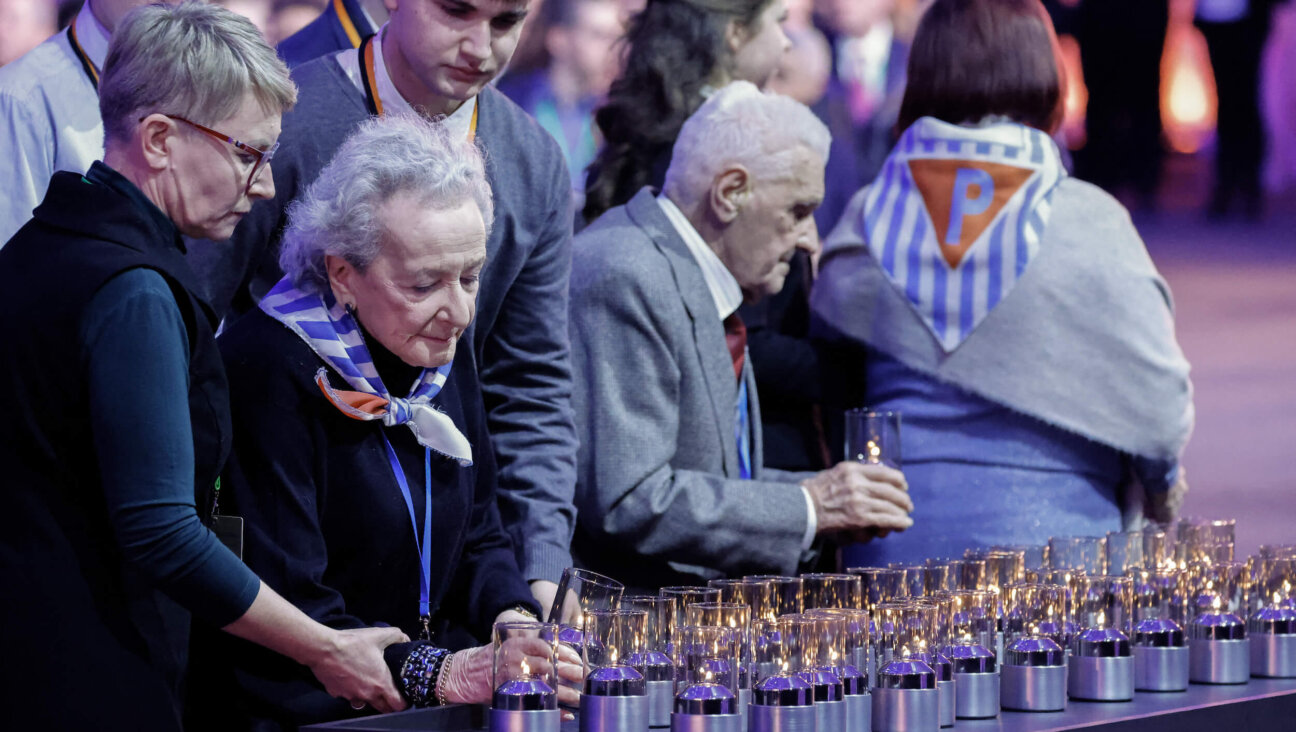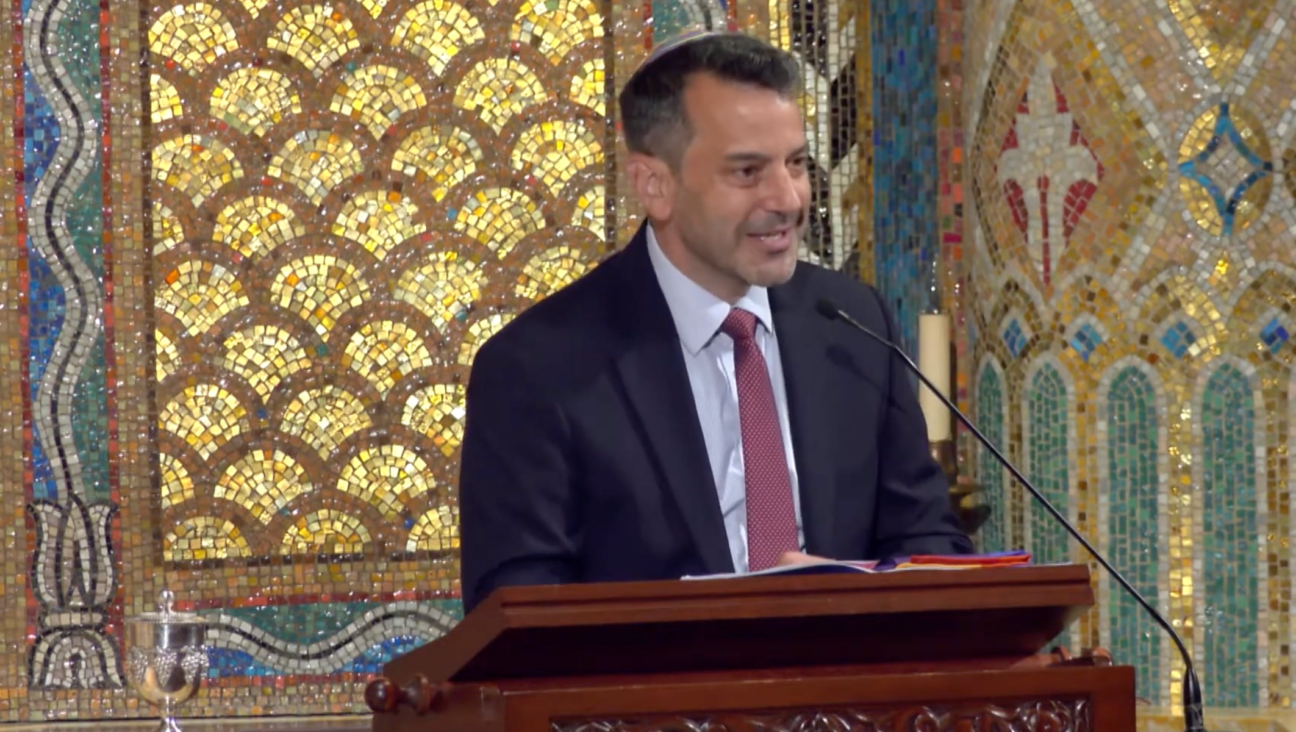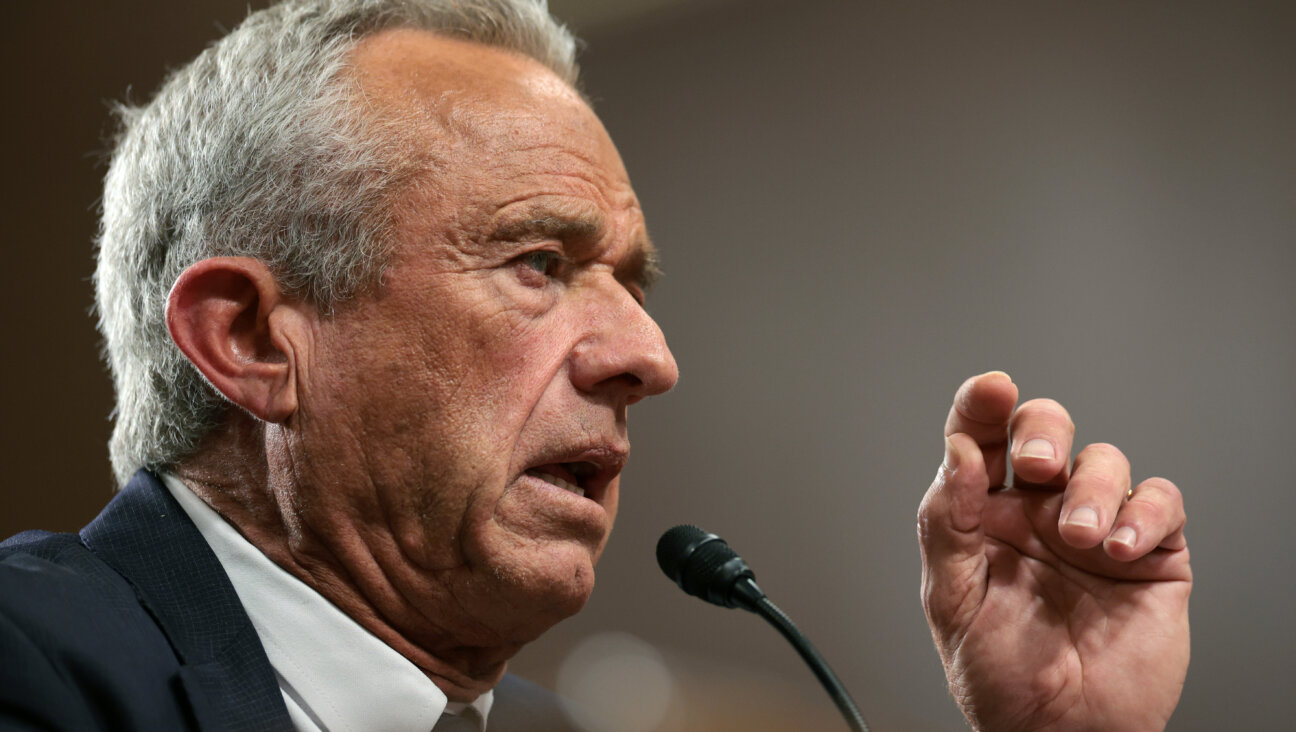Bernie Sanders Should Embrace His Kibbutz Past — Not Shrink From It

Democratic presidential candidate Bernie Sanders must have cringed when the name of his mystery kibbutz finally came to light last week. Almost as soon as the world found out where he had volunteered after finishing his undergraduate degree in 1963, blogs started up the spin machine with the intent of tagging Sanders as a “Marxist revolutionary,” and left-wing blogs attacked him for being part of a kibbutz that had been founded on Palestinian land.
But instead of shrinking away from this story, Sanders should embrace the kibbutz narrative and, in fact, place it front and center in his campaign.
The kibbutz in question, Sha’ar HaAmakim, located just south of Haifa, was founded by members of the Socialist-Zionist Hashomer Hatzair movement in 1935. Some worry that this spells trouble for Sanders from the right, because words like “Marxist” and “Stalinist” are now being hurled at the Democratic-Socialist. In the wake of these attacks, many on the left have been hoping to quiet down this story of a presidential candidate hosted in a Socialist-Zionist village in Northern Israel.
And yet, the story is actually totally of a piece with Sanders’s leftist sensibility and appeal. In today’s political climate, where most pundits and advisors try to steer Democrats toward the center when they veer too far to the left, Sanders’s unusual deviation from this norm is one reason why his candidacy is so exciting. He is, for the most part, running a leftist campaign unafraid to swing hard on issues, most prominently economic and environmental justice. He has been a progressive leader in the halls of power for decades — and he needs to be unafraid on this kibbutz issue, too.
The Hashomer Hatzair movement, of which I have been a member for more than 25 years, is something that Sanders should embrace. Although the New York Times erroneously refers to the movement in the past tense, the organization runs community programming, camps (“Shomria” in the United States and Canada) and secular Jewish events with youth and adults in 21 countries, counting 10,000 members in Israel and 8,000 in tens of communities around the world today. The youth-led critical thinking and leadership training that has been key to the movement’s success for more than 100 years is also central to Sanders’s success. His campaign, heavily favored by young Democrats, is asking critical questions that few others have dared to ask, and calling out competitors for failing to lead the way forward.
Sanders has an involved relationship with Israel. While he is clear in his disdain for inequality in the U.S., he has been less forthcoming on the Israel-Palestine front. Hashomer Hatzair, which in its early decades established a socialist Worker’s Party seeking a bi-national state for Jews and Palestinians, is a perfect fit for Sanders. The party was a joint effort between members of the kibbutz federation, for the most part rural farmers and urban socialists who saw socialism and mutual self-determination as fundamental ingredients necessary for their ideological vision to take shape. The idea that all peoples (including Jews and Palestinians) have the right to self-determination in the place they call home should be a home run with Democrats around the country.
If all this “bi-national” business sounds radical to some readers, it should be noted that the reality on the ground is that a growing number of people are once again seriously discussing the kind of solution that Hashomer Hatzair proposed back then. This is especially so given that, at an Israeli Labor Party meeting this past weekend, the ostensible opposition to Israel’s rightist coalition voted to clarify its view that the “two-state solution” is now so impracticable as to be irrelevant.
Hashomer Hatzair’s political presence and educational projects have a long history of seeking a shared society for Jewish and Palestinian citizens of Israel — a goal evident as early as 1949 at the Givat Haviva Educational Institute. And the movement’s commitment to building a just peace can be seen in a more recent example, the Solidarity of Nations – Achvat Amim program, which I co-founded. This program brings volunteers to work and learn with leading human rights organizations in Jerusalem based on the value of self-determination for all peoples.
All this is a strong progressive legacy that Sanders can take on the campaign trail. He can use it to lead people toward the left and win votes. Even the kibbutz Sanders lived on, which makes solar water heaters, can be drawn on to support his policy goal to create new green jobs. The campaign sound bites and slogans basically write themselves.
Meanwhile, Sanders has room to better his positions on issues from race to foreign policy, and beyond. This is true on the issues surrounding Israel and Palestine too. But it would be unfair to assume that he would have been aware of the history of Palestinian expulsion and exodus as a young volunteer on a kibbutz when, at least in the West, the official Israeli narrative was the dominant one. It is important for Sanders, in facing these real and important concerns, to be able to simultaneously call for everyone, from kibbutz members to members of Congress, to reckon with the history of the Nakba and the reality of occupation while holding up the right of two peoples who call the same place home to build lives there in a just way.
At the core of both the Sanders campaign and the movement that brought him to Israel in 1963 is the notion that critical thinking is essential to building a world based on liberation and equality. Sanders should deploy that critical thinking now to challenge his detractors on both the right and the left. He can use it to fight the right-wingers who cynically connect his name to Stalin’s deservedly sullied one, and the left-wingers who object that his kibbutznik past makes him party to the oppression of Palestinians. This is the time for Sanders to inject some nuance into his campaign — not to run away from an argument that he can and should win.
A. Daniel Roth grew up in Hashomer Hatzair in Toronto and lived in a commune of the movement in New York City. He is currently living in South Tel Aviv where he is a journalist and educator. His writing and photography is at allthesedays.org and you can follow him on Twitter @adanielroth.
A message from our Publisher & CEO Rachel Fishman Feddersen

I hope you appreciated this article. Before you go, I’d like to ask you to please support the Forward’s award-winning, nonprofit journalism so that we can be prepared for whatever news 2025 brings.
At a time when other newsrooms are closing or cutting back, the Forward has removed its paywall and invested additional resources to report on the ground from Israel and around the U.S. on the impact of the war, rising antisemitism and polarized discourse.
Readers like you make it all possible. Support our work by becoming a Forward Member and connect with our journalism and your community.
— Rachel Fishman Feddersen, Publisher and CEO























